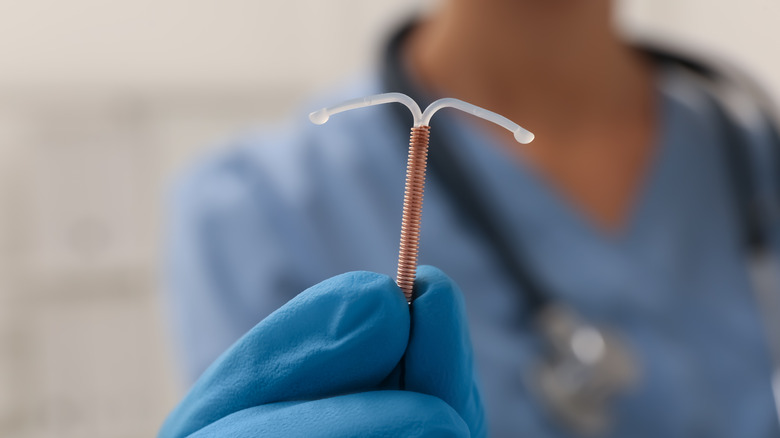TikTok's Viral Birth Control Pyramid Shows The Most Effective Forms To Prevent Pregnancy
The choices for contraception are truly varied and vast, which makes preventing pregnancy a lot easier now than it was many years ago. From hormonal IUDS and birth control pills to rings and shots, there's a lot on offer.
If you're looking for the most effective form of contraception, you've probably done your research on the topic. But a viral TikTok video made by influencer sexeducationnation has made it easier for you by ranking the different pregnancy prevention methods on a pyramid. Narrated somewhat dramatically (with drumrolls and theatric music in the background), the video shows the influencer ripping off pieces of black A4 paper to reveal different contraceptive methods printed on white pieces of paper pasted on a wall. Effectiveness is broadly measured based on failure rate within the first year of use and typical use of the method.
When compared with other medical sources online, like the Centers for Disease Control and Prevention, the general pyramid seems accurate. The TikToker starts off with male condoms, which are known to be 87% effective, and moves on to the vaginal ring which the video puts at 93%. Next on the list is the pill, followed by the hormonal shot which is known to be 96% effective. Sitting almost at the top of the pyramid is the IUD, followed by the clear winner — the implant.
The implant is 99.9% effective
Compared to all other reversible birth control methods out there, implants sit right at the top with only a 0.1% failure rate, per the Centers for Disease Control and Prevention. It's likely popular because of two factors — it's inserted into your inner upper arm and therefore causes less discomfort than having an IUD in your uterus and it also does the job without much effort on your part.
As explained by an assistant professor in the department of family medicine at the University of Michigan and chair of the board of the Association of Reproductive Health Professionals, Justine Wu (via Health), "Anything working on its own is going to be [more effective] because there's no human error." Also, for those who feel uncomfortable about having a pelvic exam, the implant would be a perfect fit.
The implant, which is a long-acting reversible contraception (LARC) like the IUD and can be removed at any time, works by releasing progestin into your system after it's placed under your skin. The progestin, which is released over the course of three to five years, works by thickening the cervical mucus. Basically, this makes it difficult for the sperm to reach the egg as easily as it would without such an environment. Another plus of the implant is that it's progestin-only, which means it becomes a naturally safer option for those who are resistant to trying estrogen-based contraceptives.
What about the IUD?
The IUD was the second-best method, per the TikTok video. There are two different types — hormonal and copper IUDs. Both stand at more than 99% effectiveness rate and neither requires regular clinic visits (unless the device shifts in position and you want to have that taken care of), but they work differently from one another.
With the copper IUD, the uterus becomes "inhospitable to sperm," according to Florida-based OB-GYN, Dr. Staci Tanouye (via Today). "The sperm are not modal in that sort of environment within the uterus because of the reaction of what the copper does to it. The sperm should not be able to move up to the tube and ever meet an egg," she said. The hormonal IUD contains progestin, like the implant, and works by thickening the cervical mucus.
There can be some discomfort when the contraceptive method is inserted into the vagina. And some amount of cramping and irregular or heavy periods are side effects of the copper IUD. The hormonal IUD, on the other hand, actually makes your menstrual experience better by reducing cramps and blood flow with prolonged use, per Planned Parenthood.
The TikToker's viral video may not have had the different types of birth control explained or why she chose to stack the pregnancy prevention methods the way she did on the pyramid but her rating seems in line with what most health professionals think.


